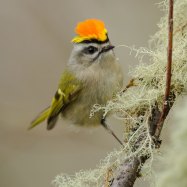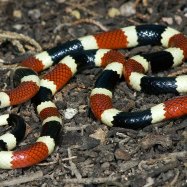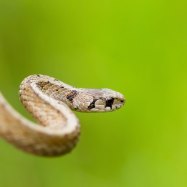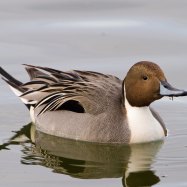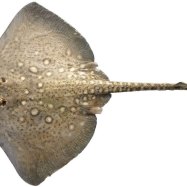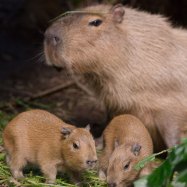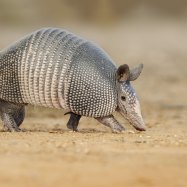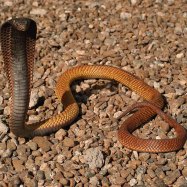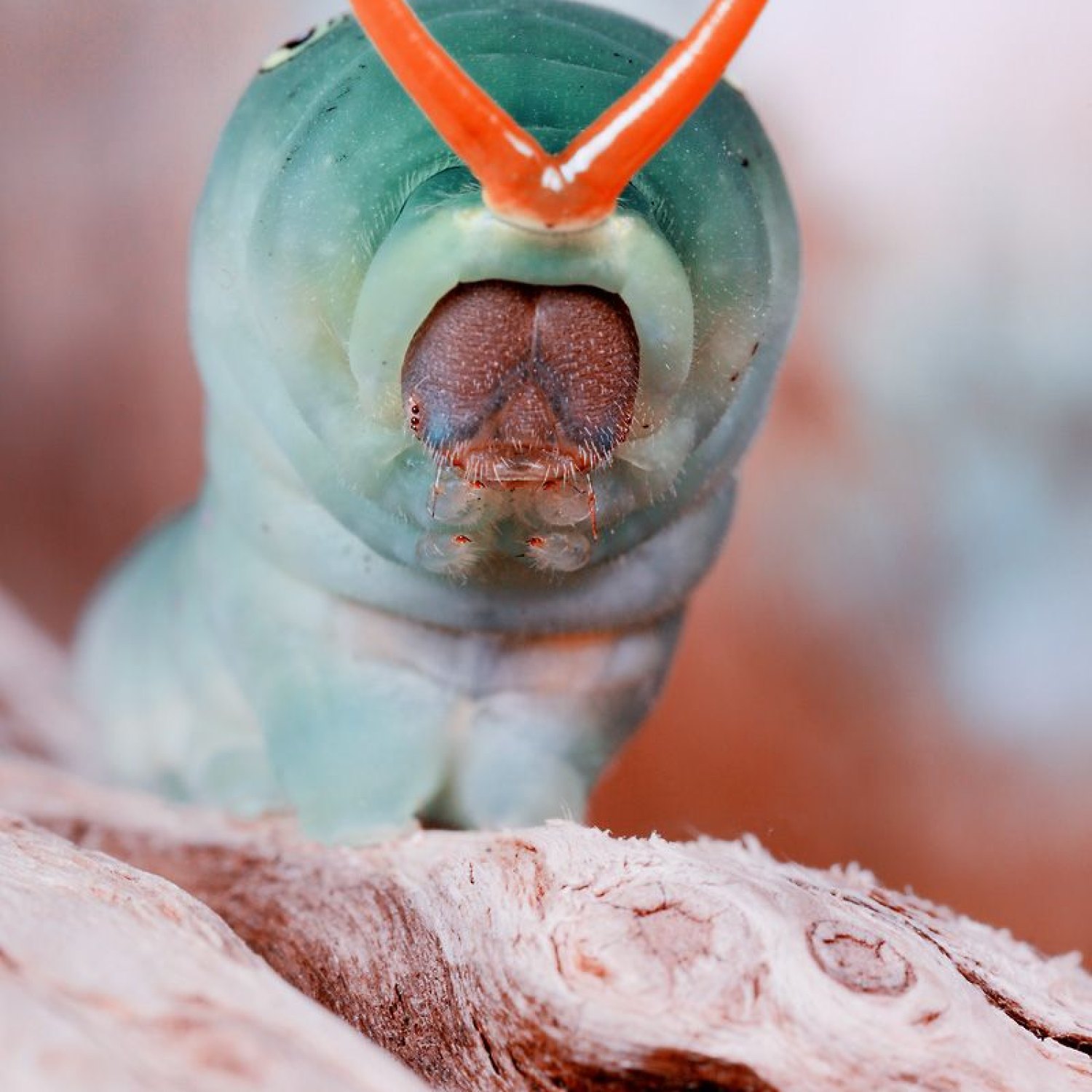
Asp Caterpillar
1.2 to 2.4 inches (3 to 6 cm)
The Asp Caterpillar, also known as the 'flannel moth', is a caterpillar that can be found in the southern United States. Despite their small size of 1.2 to 2.4 inches, their furry appearance can be deceiving, as they pack a powerful sting that can cause severe allergic reactions. Beware when encountering these caterpillars in the wild! #AspCaterpillar #SouthernUS #MothFamily
Animal Details Summary:
Common Name: Asp Caterpillar
Kingdom: Animalia
Habitat: Forests, gardens, and parks
The Mysterious and Dangerous Asp Caterpillar: Nature's Furry Assassin
Nature is full of fascinating and beautiful creatures, but there is one insect that stands out for its striking appearance and deadly nature – the Asp Caterpillar. With its furry and colorful coat, it may seem harmless and even cute, but don't let its appearance fool you. This little creature is known as the "assassin" due to its potent venom, making it one of the most dangerous caterpillars in the world.Scientifically known as Megalopyge opercularis, the Asp Caterpillar belongs to the Animalia kingdom and the Arthropoda phylum, which includes insects, crustaceans, and arachnids Asp Caterpillar. Within the class Insecta, it belongs to the order Lepidoptera, which also includes butterflies and moths. Its family name, Megalopygidae, is derived from the Greek words "megas," meaning large, and "puge," meaning posterior, which refers to its large hind end.
This fascinating creature can be found in the forests, gardens, and parks of the southern United States, Mexico, and Central America. Its country of origin is the United States, specifically in the southern regions. Within this area, it can be found hiding on trees, shrubs, or even on the ground, camouflaging with its surroundings.
With a variable coloration that can range from brown, gray, or yellowish, the Asp Caterpillar can blend in easily with its habitat, making it challenging to spot. Its body shape is caterpillar-like, and it can grow to a length of 1.2 to 2.4 inches (3 to 6 cm) Anaconda. Its furry appearance comes from long, silky, and spine-like hairs, also known as setae, that cover its body.
These hairs are its main defense mechanism, and if touched, they release a potent venom that can cause extreme pain, itching, and even nausea. This venom is a combination of histamines, serotonin, and toxins, making it dangerous even to humans. The Asp Caterpillar's sting has been described as a combination of a bee and scorpion sting, and its effects can last for hours or even days.
The young caterpillars have a black head and a bright green body, while the older ones have a brown or tan body with a darker stripe in the center. They also have two sets of red dots that resemble eyes, making them look like a tiny snake, adding to their defense mechanism.
One of the unique traits of the Asp Caterpillar is its feeding method, as it is one of the few herbivorous caterpillars in its order of Lepidoptera. It feeds on the leaves of a wide range of plants, such as oaks, elms, and citrus trees. This feeding behavior makes them not only a pest to crops but also a threat to the balance of the ecosystem.
Their feeding method, along with their potent venom, makes the Asp Caterpillar both an attractor and a repeller. While their bright and furry appearance can be alluring for some people, others try to avoid them at all costs due to the pain they can inflict.
However, despite their notoriety as "nature's furry assassin," the Asp Caterpillar plays an essential role in the balance of nature. As they feed on certain plants, they control their growth, preventing overpopulation and promoting biodiversity.
Unfortunately, with the destruction of natural habitats and the introduction of non-native plants, the Asp Caterpillar's population is decreasing, putting them on the list of vulnerable species. This decline is alarming, as it not only affects the caterpillar's survival but also the ecosystem as a whole.
Efforts are being made to protect and conserve the Asp Caterpillar, as well as other vulnerable species, by preserving their natural habitats and controlling the use of pesticides and herbicides. Education and awareness about the dangers of this seemingly harmless caterpillar are also crucial in preventing unnecessary contact and harm.
In ancient times, the Asp Caterpillar was considered a symbol of poison and death due to its deadly sting. It has also been associated with curses and bad luck, representing the dangers and uncertainty of the natural world. Despite these superstitions, this little creature remains an intriguing and essential part of nature, reminding us of the delicate balance and interconnectedness of all living beings.
In conclusion, the Asp Caterpillar is a unique and fascinating creature with a delicate balance between beauty and danger. With its striking appearance and potent venom, it has earned the nickname of "assassin," but it also serves as a reminder of the importance of preserving and respecting nature.
Next time you come across this furry little caterpillar, remember the delicate role it plays in the ecosystem and admire it from a safe distance. After all, nature's most beautiful and intriguing creatures can also be the most dangerous.

Asp Caterpillar
Animal Details Asp Caterpillar - Scientific Name: Megalopyge opercularis
- Category: Animals A
- Scientific Name: Megalopyge opercularis
- Common Name: Asp Caterpillar
- Kingdom: Animalia
- Phylum: Arthropoda
- Class: Insecta
- Order: Lepidoptera
- Family: Megalopygidae
- Habitat: Forests, gardens, and parks
- Feeding Method: Herbivorous
- Geographical Distribution: Southern United States, Mexico, and Central America
- Country of Origin: United States
- Location: Southern United States
- Animal Coloration: Variable, typically brown, gray, or yellowish
- Body Shape: Caterpillar-like
- Length: 1.2 to 2.4 inches (3 to 6 cm)
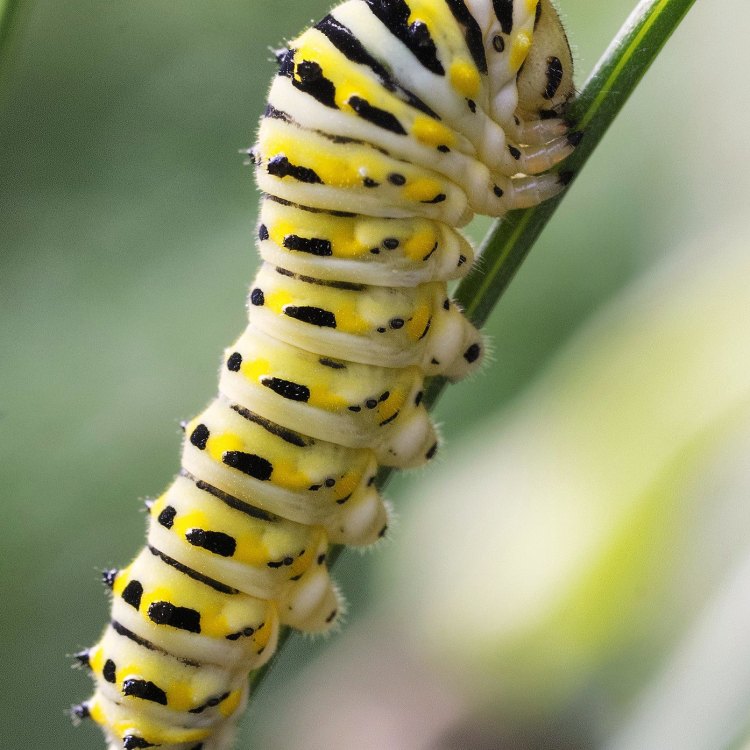
Asp Caterpillar
- Adult Size: Small to medium-sized
- Average Lifespan: Around 2 weeks
- Reproduction: Sexual
- Reproductive Behavior: Males search for females to mate with
- Sound or Call: Does not produce any sounds
- Migration Pattern: Non-migratory
- Social Groups: Solitary
- Behavior: Usually active during the day
- Threats: Predation, habitat loss
- Conservation Status: Not listed (Least Concern)
- Impact on Ecosystem: Can have an impact on tree health due to defoliation
- Human Use: No significant human use
- Distinctive Features: Covered in venomous spines
- Interesting Facts: The spines of the Asp Caterpillar can cause a painful sting
- Predator: Birds, rodents, reptiles
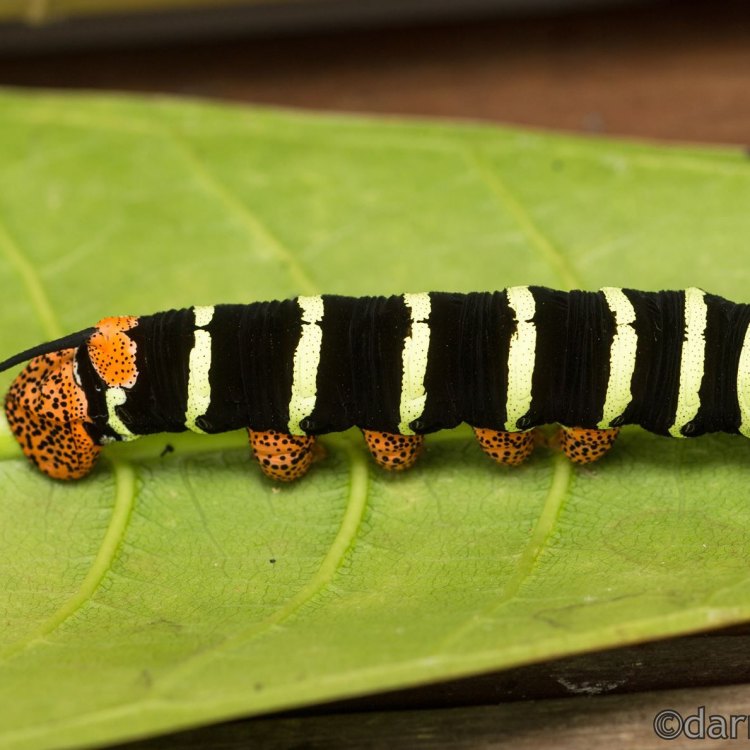
Megalopyge opercularis
The Fuzzy and Dangerous World of Asp Caterpillars
Imagine finding an alien-like creature crawling on your plants, covered in long, venomous spines. This is the reality for those who come across an Asp Caterpillar. These small to medium-sized caterpillars may seem harmless at first glance, but they are known for their painful sting and distinctive features. In this article, we will dive into the unique world of Asp Caterpillars and explore their interesting behavior, threats, and impact on the ecosystem PeaceOfAnimals.Com.Size and Lifespan
The Asp Caterpillar, also known as the Southern Flannel Moth Caterpillar, is a small to medium-sized caterpillar that is mostly found in the southern United States. They can grow to be around 1.2 inches in length, making them easy to miss among plants and trees.But don't let their small size fool you. These caterpillars have a short but eventful lifespan of around 2 weeks. During this time, they go through various stages of growth, shedding their skin several times before reaching their final form as a moth.
Reproduction and Behavior
Asp Caterpillars reproduce sexually, with males actively searching for females to mate with. Females lay their eggs on the underside of leaves, and the eggs hatch into tiny caterpillars within a few days. These caterpillars feed on various plants and trees, such as oak, elm, and sycamore Arizona Coral Snake.While they may seem innocuous, Asp Caterpillars are covered in venomous spines that can cause a painful sting if touched. However, they are not aggressive and will only use their spines in self-defense when threatened. This is why it is important to exercise caution when exploring nature and avoid touching these caterpillars.
Migration and Social Behavior
Unlike some other insect species, the Asp Caterpillar does not have a migratory pattern. They are non-migratory and typically stay in one area, feeding on the plants and trees in their immediate surroundings.These caterpillars also do not exhibit any social behavior and are solitary creatures. They do not communicate with each other or form any social groups.
Active during the Day
Asp Caterpillars are also known for their daytime activity. They are usually active during the day, feeding on plants and trees and preparing for their transformation into a moth. This makes them more visible to humans, increasing the chances of accidental encounters.Threats to the Asp Caterpillar
Despite their unique appearance and features, Asp Caterpillars face several threats in the wild. The primary threat to these caterpillars is predation. They are a favorite food source for birds, rodents, and even some reptiles. Their bright colors make them an easy target for predators, and their venomous spines also serve as a defense mechanism against predators.Another significant threat to Asp Caterpillars is habitat loss. As human development continues to encroach on their natural habitats, these caterpillars are losing their food sources and shelter. This can also disrupt their reproduction and decrease their population size.
Conservation Status
Despite these threats, Asp Caterpillars are not listed under any conservation status. They are considered to be of Least Concern, meaning that their population is stable, and they are not at risk of extinction.However, it is essential to note that Asp Caterpillars play a crucial role in the ecosystem. While they may seem like a nuisance at times, their presence helps maintain the balance in nature.
Impact on the Ecosystem
One of the most notable impacts of Asp Caterpillars on the ecosystem is their ability to defoliate trees. As they feed on the foliage of plants and trees, they can cause significant damage to the leaves, which can lead to defoliation. This can impact the overall health of the trees, affecting their ability to produce oxygen and provide shelter for other species.Despite this, Asp Caterpillars are an essential part of the food chain, providing a food source for predators. They also help control the growth of plants and trees, preventing overpopulation and promoting a diverse ecosystem.
Human Use and Interesting Facts
Asp Caterpillars have no significant human use, and they do not serve any commercial purpose. However, they do hold some interesting facts that make them stand out in the insect world.As mentioned earlier, their venomous spines can cause a painful sting if touched. The sting is said to be similar to that of a bee or wasp, causing a burning sensation and leaving a red rash. This has earned them the nickname "puss caterpillar" due to the appearance of the rash resembling a cat scratch.
In some cultures, the sting of the Asp Caterpillar is believed to have medicinal properties. It is thought to help with conditions such as arthritis and rheumatism, although there is no scientific evidence to support these claims.
Another interesting fact about Asp Caterpillars is that they have no sound or call. Unlike some insects that produce sounds for communication, Asp Caterpillars are silent creatures.
Predators of the Asp Caterpillar
Aside from humans, Asp Caterpillars have many predators in the wild. Birds, such as blue jays and mockingbirds, are known to prey on these caterpillars, as well as some rodents and reptiles. Some predators have developed specialized ways of dealing with the venomous spines of Asp Caterpillars, such as attacking from the bottom, where there are no spines.The Importance of Coexisting with Asp Caterpillars
Asp Caterpillars may not seem like the most beloved creatures due to their painful sting and ability to damage trees. However, it is crucial to recognize their role in the ecosystem and learn to coexist with them.Asp Caterpillars are a vital part of the food chain, providing a food source for various animals. They also play a role in maintaining a balanced ecosystem. Therefore, it is essential to exercise caution when encountering them and avoid disturbing their natural habitats.
Moreover, as humans continue to encroach on their habitats, it is our responsibility to ensure their survival and the preservation of their role in nature. This can be achieved through conservation efforts and promoting sustainable practices that protect the environment.
Conclusion
In conclusion, the world of Asp Caterpillars is filled with unique features, behavior, and threats. These small but mighty creatures play an important role in the ecosystem, and it is our responsibility to ensure their survival. So, the next time you come across an Asp Caterpillar, take a moment to appreciate its place in nature and tread carefully to avoid their painful sting.
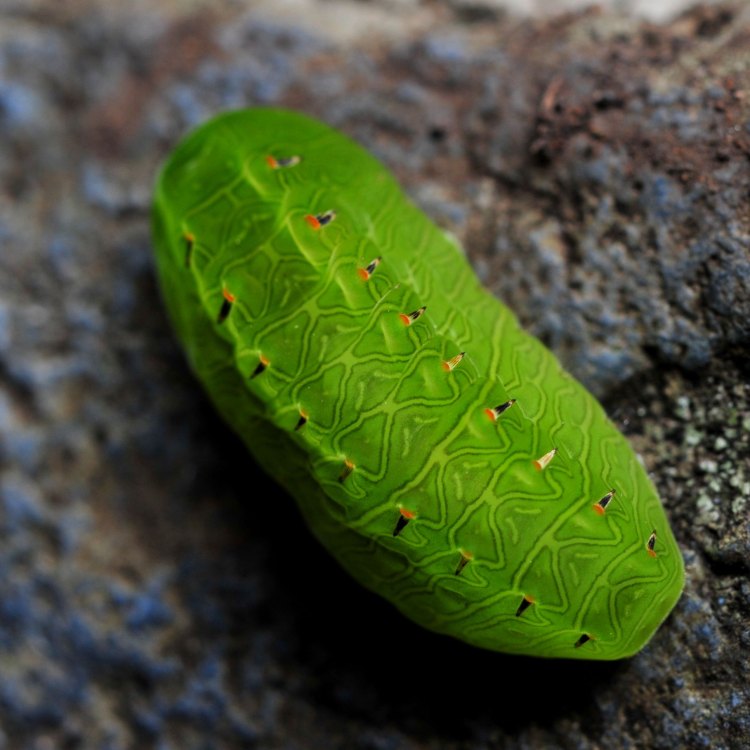
The Mysterious and Dangerous Asp Caterpillar: Nature's Furry Assassin
Disclaimer: The content provided is for informational purposes only. We cannot guarantee the accuracy of the information on this page 100%. All information provided here may change without prior notice.

